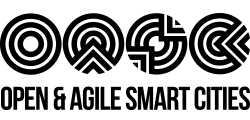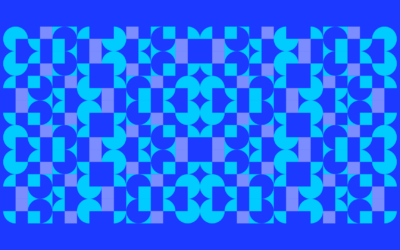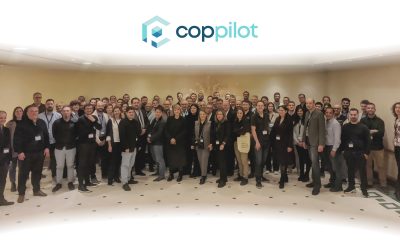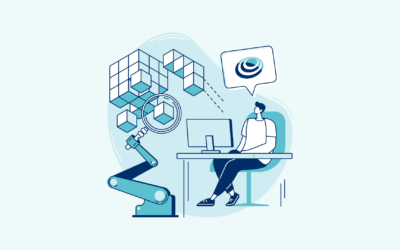They say that good things come in threes. New ideas are easier to understand when they are broken into three components. We are more likely to remember information when it is divided up into three categories. And organising things into threes has a more engaging rhythm that helps us flow along with a new concept.
So it was probably not that surprising to see so many thinkers, city leaders, and urban influencers talk in sets of three at last week’s Connected Smart Cities Conference, organised by the Open and Agile Smart Cities (OASC) Initiative and FIWARE. The Connected Smart Cities Conference brought together over 200 European and international participants working in cities, European governments, businesses, incubators, startups and industry associations to discuss how the smart city agenda is unfolding, and what we can collectively do to support goals happening more effectively and quickly.
The Three Big Challenges for Smart Cities
Jarmo Eskelinen, from OASC started the day by helping us quickly understand three of the greatest challenges ahead for cities, their citizens, and the tech businesses currently building a new generation of smart city solutions.
Eskelinen explained the three challenges as: speed, scale and solutions.
1. Speed: “Cities tend to be slow in changing,” said Eskelinen. He said this was part of the history of building trust and maintaining the confidence and security of a city’s residents which has meant that city management culture has become monolithic and slow to adapt. This is now working against cities, as “Digitisation requires an agile approach”. Eskelinen says to seize the advantage of digitisation and the potential of a smart city infrastructure, cities must learn to harness a speed to act while still maintaining trust with local citizens.
2. Scale: “Cities tend to think they have to solve problems themselves as they have unique challenges, but mostly cities are tackling similar challenges, and no city can support an ecosystem of solutions in itself,” says Eskelinen. While it is true that every city does have its unique and often complex geographical, political, historical and cultural drivers, we must look more for some commonalities across cities in order to help identify the common elements for a smart city solution so that it can scale to other cities.
3. Solutions: “If we have scalable solutions with big vendors, then cities are locked in, we will be hijacked by proprietary software,” warned Eskelinen. He emphasised the need for solutions to be built on open source frameworks so that cities and startups can build solutions that are portable and interchangeable with future technology.
This was a theme that came up repeatedly during the day. Mikael Grannas, Mayor of Sipoo, in Finland, for example, also highlighted the difficulties that cities face when they are stuck with buying proprietary software that they are locked in to and cannot build on top of or collaborate with startups and new civic tech projects. He said vendor lock in was a key example of how technology is preventing cities from providing services. He gave the example of how close to 50% of the work time of a city’s children’s nurse can be taken up by duplicating and copying data from one system to another because vendor lock-in does not have integrations between various proprietary software solutions. This is work that should be automated and would mean that nurses could spend more time with local families.
 The Three Tech Principles of the OASC
The Three Tech Principles of the OASC
FIWARE Chief Architect, Juanjo Hierro, also spoke of a key set of threes: the three technological principles that are shared by the 75 city members of the Open and Agile Smart Cities Initiative.
Hierro outlined the three technologies necessary to drive smart city project development, which also, in a way, responds to the three challenges outlined by Eskelinen.
1. A Common API for getting access to the city on realtime: Hierro said the FIWARE NGSI (Next Generation Service Interface) API enables cities to use a single API to draw in a whole range of realtime sensor and open data and feed it into a format that is machine -readable and can be used to create applications and new product solutions.
2. Standards that enable a platform to be built: Hierro believes that the use of standards and a common API does not prevent industry competition. In fact, he says that in the smart cities space, what is emerging is a “coopetition” where partners collaborate at times, and compete at other times. He gave the example that several competitors could each build their own platform for applications that publishes data from the NGSI API. Standards are at the core of this platform approach, but still allow individual businesses to provide unique, marketable solutions.
Responding to Eskelinen’s ‘scale’ challenge, Hierro said FIWARE’s NGSI API is “essential for being able to help develop solutions that can plug and play in different cities.”
3. Information models driven by an implementation-first approach: Hierro said the third technological principle of OASC smart city projects is the development of information models. He pointed to Helsinki’s CitySDK as a best practice example of this approach. Each city may have its own data needs and need for subsets of data, but if there is a common core set of data sets that are the same for all cities, then solutions can be built that can be replicated and customised to other city needs.
Hierro said that CitySDK was built by trying to respond to a local need and then this was piloted in several other cities. In this way, it was possible to identify what needs for data the cities had in common, and those were included as essential components in the data model. Hierro said this was a much faster and effective way to build than by starting with a top-down approach where a committee makes all of those decisions.
“This is where we are now,” said Hierro. “We are showcasing examples of applications being applied in cities to solve problems and we are able to extract information to create a model that can be transferred to other cities.”
Three FIWARE Examples
Throughout the day, speakers mentioned how the FIWARE platform was enabling new smart cities solutions to be built and shared across Europe and around the world. Here are three stories we loved hearing about:
1. The City of Eindhoven: Olha Bondarenko, from the City of Eindhoven in The Netherlands said the whole city is a Living Laboratory that uses sensors, LED lights, sound systems, and citizen engagement to create a new level of interaction and place making between residents and the city authority.
For example, in areas that have high levels of activity at night, sound sensors are able to identify changes in crowd speaking patterns to to identify risks for fights so that police can resolve disturbances before they get ugly or violent.
Sensors have also been installed across the city and even included in resident volunteer backpacks so that there is widespread coverage available to measure air quality across the city. It is hoped this data could be used to help the city traffic management work with citizens to redirect traffic in the city to reduce pollution risks and contamination build up.
FIWARE is used as an enabling technology for many of these projects, and the City of Eindhoven is currently embarking on a city consultation to discuss the possibility of applying FIWARE across all the Living Labs sites as a digital layer, after the community agree on a common value base regarding privacy, ethics and the use of technology for the common good of the city.
Bondarenko said the next work will be to safeguard the public interest, stimulate economic development and build support for an organic approach to future proofing the city.
2. CreatiFI: Ingrid Willems, from iMinds and CreatiFI, shared details of some of the 60 smart creative projects funded to use FIWARE products to the market. Amongst the startups using FIWARTE technologies, Willems mentioned Protopixel that uses lighting to create dynamic, interactive experiences in public spaces and Ireland’s Artomatix which is helping build a new local gaming industry by providing design teams and startups with new tools for automated repetitive design for backgrounds and design.
3. Creative Ring: Alain Heureux, Founder of the Brussels startup incubator The Egg, spoke of the work he has done to build a new generation of startups who are inspired to build their own company and work with other startups to create a network of new businesses that stimulate economic development and create new job opportunities for a wider demographic of local citizens. Here has also been instrumental in establishing the Creative Ring Network, which will be hosting the #hack4FI Creative Ring Challenge in Finland, where developers can win up to €50,000 to build a solution that uses FIWARE to create new cultural and heritage-focused products.
The Connected Smart Cities Conference was an inspiring start to 2016, promising another energising year of activity from cities, startups and industry in using FIWARE to create a new approach to smart cities infrastructure so that it is open, enables local economic development, and encourages the participation of local citizens.



